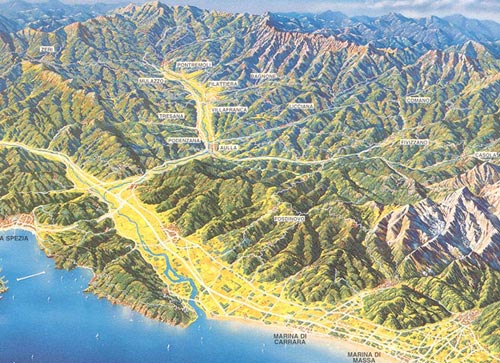At the beginning of the second millenium a wave of pilgrims flowed across Europe on their way to visit the most sacred sites of Christendom with the three major attractions Rome, Jerusalem and Santiago de Compostela in Spain.
One of the most important pilgrim roads leading to Rome was the Via Francigena, literally "the road from the Frankish lands'. The Via Francigena was not a single 'road' in the strict sense, but rather a number of possible routes which changed over the centuries as trade and pilgrimage developed.
Depending on the time of year, the political situation and the relative popularity of the shrines of saints along the route, travellers may have taken one of three or four crossings of the Alps and the Apennines.
The memory of the Francigena Way was first recorded by Sigerico the Serious, Archbishop of Canterbury from 989AD to 994AD, on his return from Rome after receiving the pallium, the symbol of authority for Archbishops, from the Pope.
He records his pilgrimage in eighty stages from Rome back to England, including six stages passing through Lunigiana starting with the monastry of San Benedetto next to the step of the Cisa (Montelungo), Puntrembel (Pontremoli), Aguilla (Aulla), Santo Stefano, Sanctam Mariam de Sardena (Sarzana) and finally to Luni.
Codiponte was also once an important stopping place on the Via Francigena for pilgrims crossing over the Garfagnana on their way from Lunigiana to Lucca and on to Rome.
Today the Via Francigena has been "rediscovered" and has become a popular tourist trail. A walk on the old pilgrim route through the chestnut woodlands and medieval stone villages of Lunigiana, with the stunning backdrop of the Apennine and Apuan Alps, gives you a real feel for the natural environment, history and traditions of the region, and the incredible variety of the local landscape.









